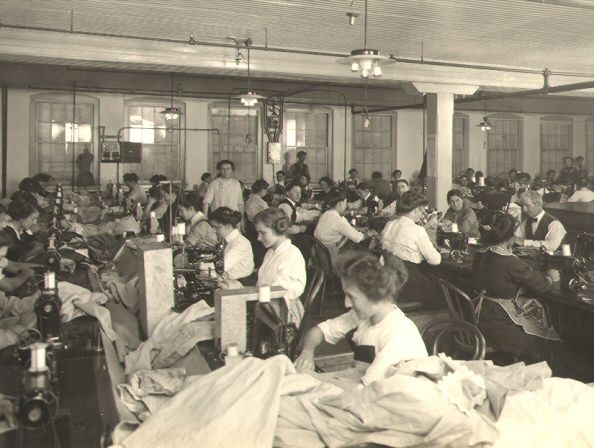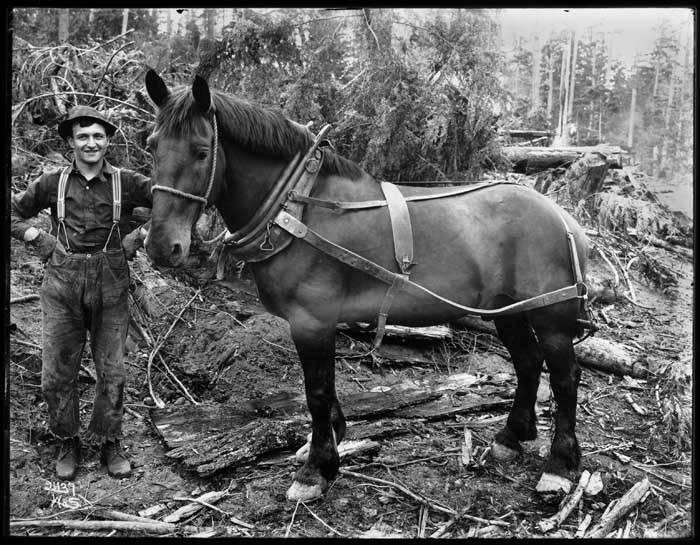Bringing Your Ancestors to Life: Why Their Jobs Matter
Imagine for a moment that you could step into your great-great-grandmother’s shoes for a day. What would you see? What would you hear? What challenges would you face? The answers to these questions often lie in a seemingly simple piece of information: your ancestor’s occupation.

Think about it – our jobs today aren’t just about earning a paycheck. They shape our daily routines, influence where we live, determine our social circles, and even impact our health. The same was true for our ancestors, only often more intensely.
Picture two of your ancestors living in the early 1900s: one, a weather-beaten farmer in rural Indiana, rising before dawn to milk the cows; the other, a smartly dressed bank clerk in New York, commuting to work on the newly built subway. Though they might share the same family tree, their daily experiences couldn’t be more different. Their occupations didn’t just dictate their incomes – they shaped their entire worlds.
Your family’s story is written in the jobs they held. Was your ancestor a coal miner in Pennsylvania? Imagine the dark, dangerous conditions they faced daily, and the close-knit mining community they were likely part of. Or perhaps they were a schoolteacher in a one-room schoolhouse on the American frontier? Think about the challenges they might have faced educating children of all ages with limited resources.

Geography played a huge role too. If your family came from a coastal town, chances are you’ll find fishermen, shipbuilders, or merchants in your family tree. Moved to an industrial city during the Industrial Revolution? You might discover factory workers, engineers, or perhaps an entrepreneur who seized new opportunities.
But here’s where it gets really exciting: knowing your ancestor’s occupation allows you to connect with them on a personal level. Let’s say you discover your great-grandfather was a cooper – a barrel maker. Suddenly, you can almost hear the rhythmic tapping of his hammer, smell the fresh-cut wood in his workshop, and feel the pride he might have taken in his craft. You’re no longer just looking at a name and date on a family tree – you’re connecting with a real person who lived, worked, and helped shape the world you live in today.
Understanding our ancestors’ occupations does more than satisfy curiosity – it brings our family history to vibrant life. It helps us appreciate the skills, challenges, and everyday experiences of those who came before us. So the next time you uncover an ancestor’s occupation, take a moment to really think about what that job meant in their time and place. You might just find yourself walking a mile in their shoes, seeing the world through their eyes, and understanding your own story in a whole new light.
Researching Ancestral Occupations
The journey to discover your ancestors’ occupations is akin to piecing together a complex puzzle, with each record providing a unique piece of the overall picture. This process often begins with census records, which serve as a foundational resource for genealogists and family historians.
Census Records: A Goldmine of Occupational Information
Census records are invaluable documents that offer a snapshot of households at regular intervals. In many countries, these records date back to the early 19th century, providing a wealth of information about our ancestors’ lives. When it comes to occupations, census records typically include:
- Job titles or professions
- Industries or sectors of employment
- Employment status (e.g., employer, employee, or self-employed)
Beyond the basic occupational information, census records can reveal much more. For instance, the presence of multiple family members with the same occupation might indicate a family business. The occupations listed can also provide clues about social status and economic conditions. A household with servants, for example, suggests a certain level of wealth, while the occupation of the head of household can indicate the family’s social standing.
Beyond Census Records: Expanding Your Research
While census records are an excellent starting point, they only scratch the surface of occupational research. To build a more comprehensive understanding of your ancestors’ working lives, consider exploring these additional resources:
- City Directories: These annual publications, popular in the 19th and early 20th centuries, often listed residents along with their occupations and business addresses. They can provide year-by-year details of an individual’s career progression and changes in employment.
- Employment Records: If you know where your ancestor worked, company archives or local historical societies might hold employment records. These can offer rich details about job titles, wages, and length of service.
- Trade Union Records: For ancestors involved in organized labor, trade union records can be a goldmine of information. These might include membership lists, meeting minutes, and records of labor disputes, offering insights into working conditions and the challenges faced by workers in various industries.
- Professional Directories: Many professions published their own directories. For example, medical registers listed qualified doctors, while legal directories provided information about practicing attorneys.
- Apprenticeship Records: For ancestors in skilled trades, apprenticeship records can reveal details about their training and early careers.
The Power of Old Newspapers
Newspapers are an often-overlooked resource that can add color and context to your ancestors’ occupational histories. Here’s how different types of newspaper content can enrich your research:
- Obituaries: These often provide a summary of a person’s career achievements. They might mention long-term employers, professional accolades, or notable contributions to their field.
- Job Advertisements: These can offer insights into the skills and qualifications required for various professions during different historical periods. They can also provide context about wage levels and working conditions.
- Business News: Articles about local businesses, industry developments, or labor issues can offer a broader understanding of the working environment your ancestor experienced.
- Personal Mentions: In smaller communities, newspapers often reported on the activities of local residents. You might find mentions of your ancestor’s work-related travels, promotions, or business ventures.
- Advertisements: If your ancestor owned a business, you might find advertisements for their services, providing insights into their professional life.
When using newspapers, consider searching beyond just your ancestor’s name. Look for mentions of their employer, industry, or profession to build a more comprehensive picture of their working life.
By combining these various resources, you can build a rich, multifaceted understanding of your ancestors’ occupations. This not only tells you how they earned a living but also provides valuable insights into their daily experiences, skills, and the economic and social contexts that shaped their lives. Remember, each occupation you uncover is a window into your family’s past, offering a tangible connection to the lives your ancestors lived.
Interpreting and Understanding Old Professions

When researching ancestral occupations, you’re likely to encounter job titles that seem cryptic or entirely foreign. A “fuller” worked in the textile industry, cleaning and thickening cloth. A “chandler” might have made candles or dealt in ship supplies, depending on the context. Understanding these roles often requires delving into the social and economic history of the time and place.
To truly appreciate these old professions, try to contextualize the work. What were the working hours like? What tools would they have used? How did their occupation fit into the broader community? For instance, a village blacksmith wasn’t just a metalworker—he was often a central figure in community life, crafting everything from horseshoes to agricultural tools.
Bringing Ancestral Occupations to Life
To bring your ancestor’s occupation to life, consider using visual aids such as photos, illustrations, or artifacts. Storytelling techniques can also help weave these details into a larger narrative, making your ancestor’s life more relatable and engaging.
Drawing parallels between historical occupations and modern-day equivalents can help you and your family members relate more closely to your ancestor’s experiences. For example, understanding a cooper’s role in the past could be likened to a modern-day craftsman or artisan, highlighting the timeless nature of skilled trades.
Resources for Further Research
Don’t underestimate the value of local resources. Libraries, historical societies, and local archives often hold unique records and can provide context specific to your ancestor’s community. Books on social history and historical occupations can also provide valuable background information to enrich your understanding.
Check out these websites packed with information about historical jobs. They’re perfect for family historians and history enthusiasts alike.
https://www.familyresearcher.co.uk/glossary/Dictionary-of-Old-Occupations-Index.html
http://www.capitalareagenealogy.org/page_96f.htm
https://www.familysearch.org/en/wiki/England_Business_and_Occupations
Conclusion
As you explore the history of your family’s occupations, remember that each profession you uncover is a vital piece of your ancestry. These stories of work, skill, and daily life connect us to our past in profound and personal ways. By delving into your ancestors’ occupations, you gain valuable insights into their social and economic lives, while also forging a deeper, more meaningful connection to their stories. So, roll up your sleeves and start uncovering the fascinating professions that shaped your family’s history. Share your discoveries, ask questions, and keep these important stories alive for generations to come.